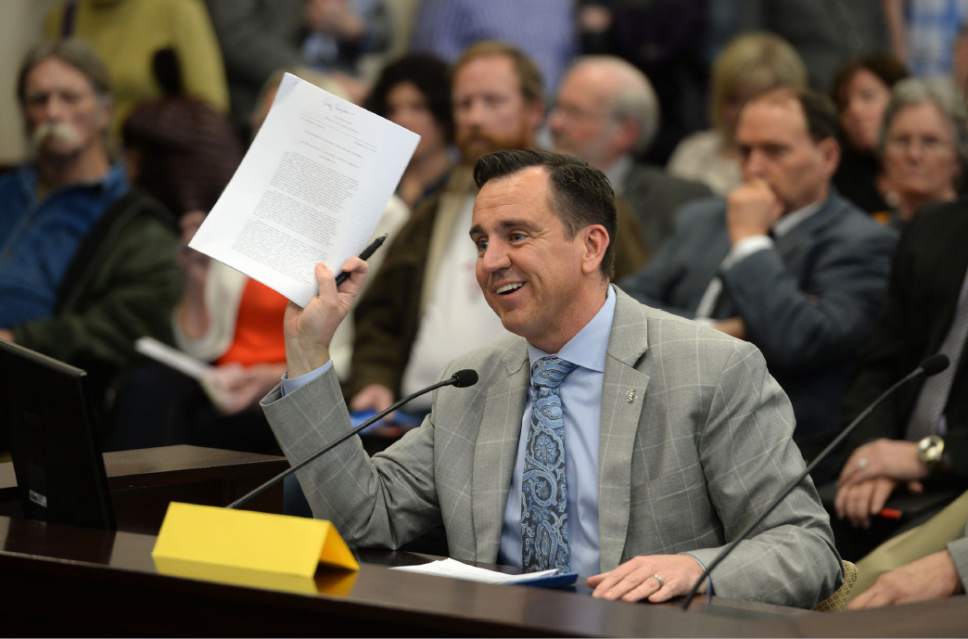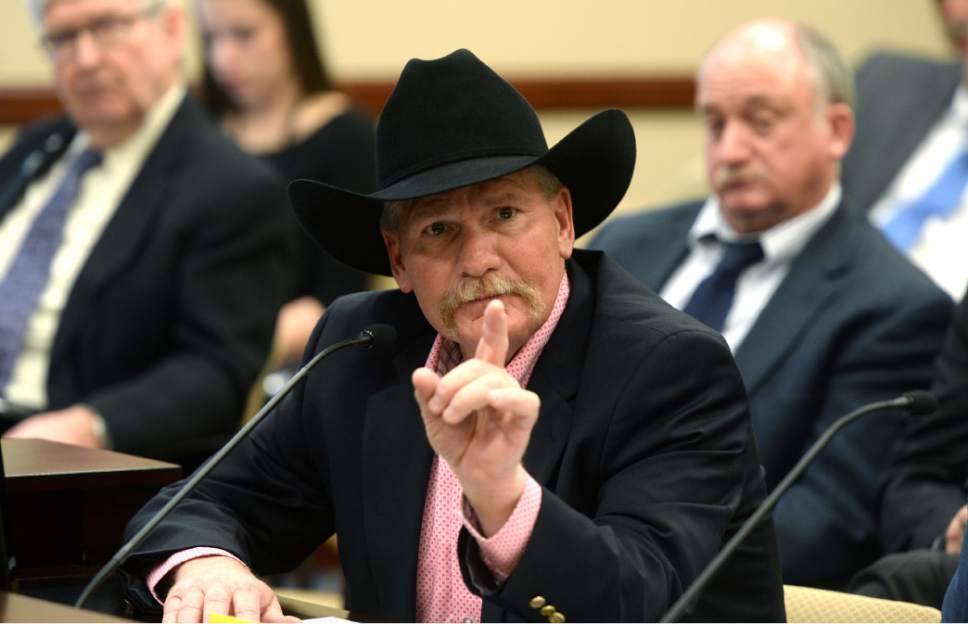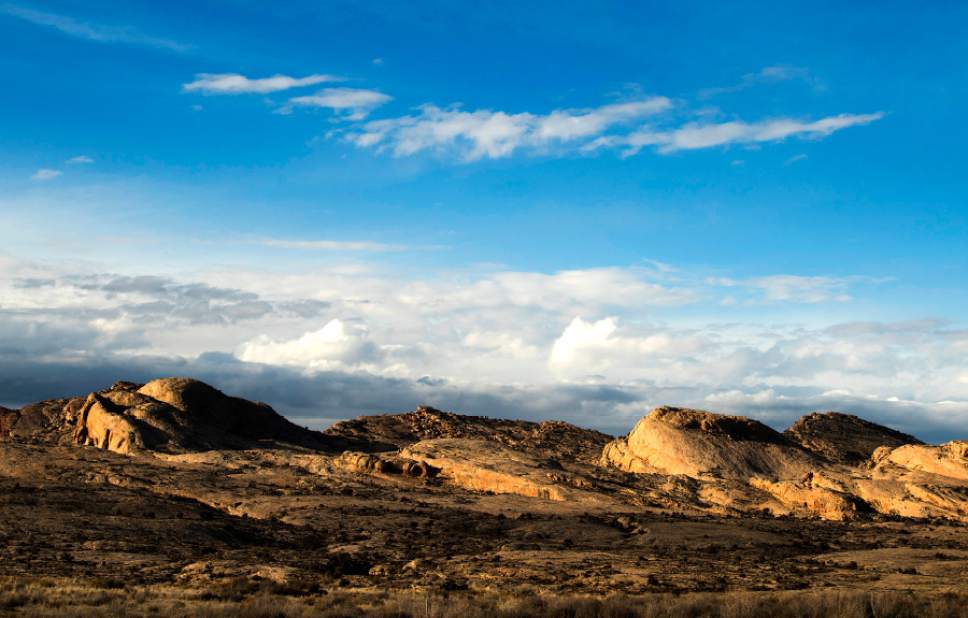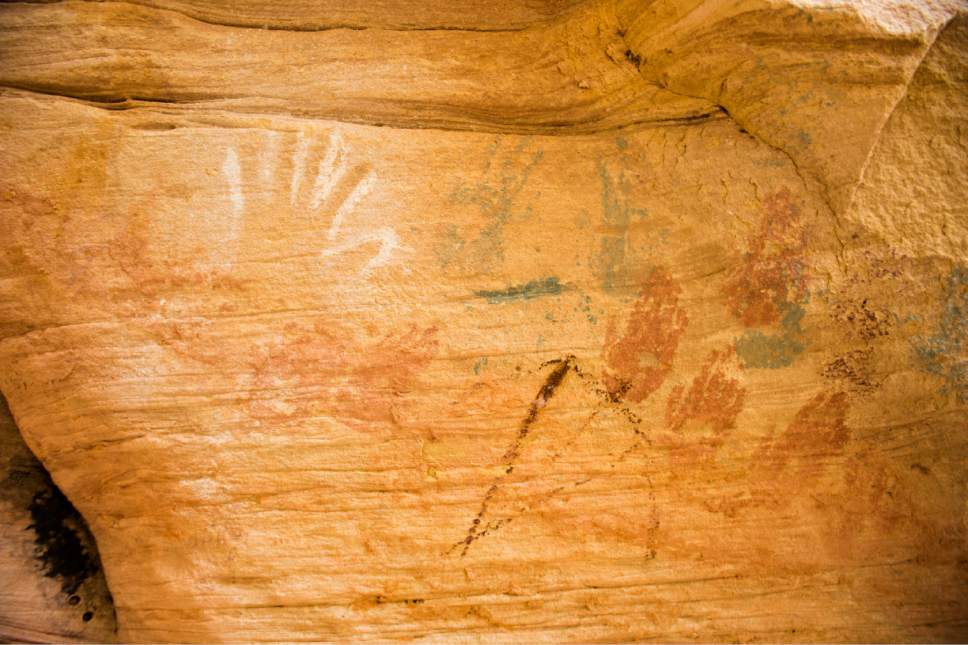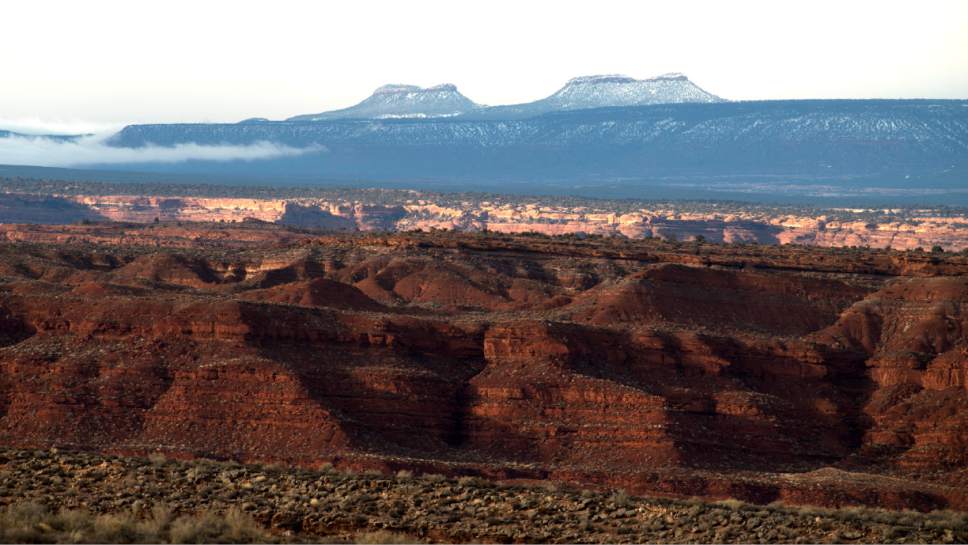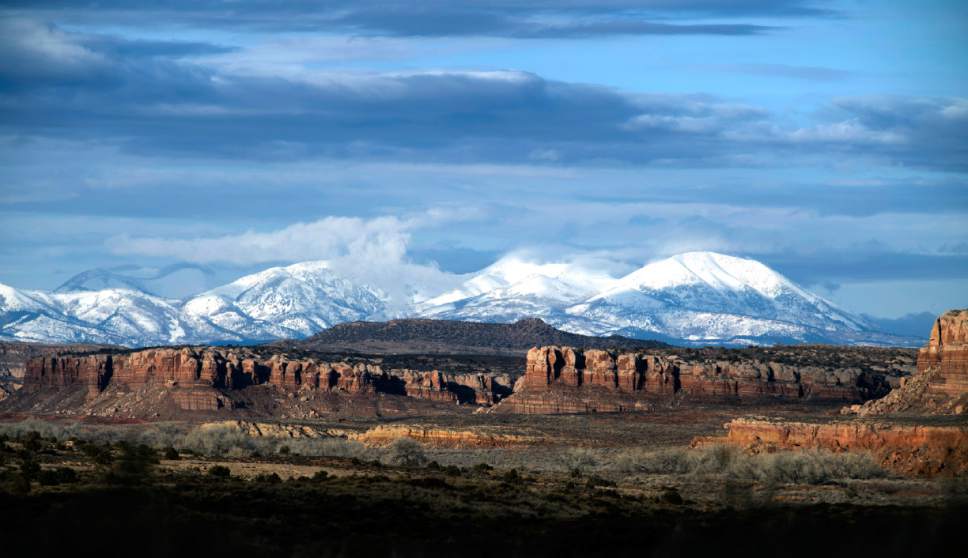This is an archived article that was published on sltrib.com in 2017, and information in the article may be outdated. It is provided only for personal research purposes and may not be reprinted.
Star-filled nights and natural quiet, deafening silence. Pinyon-juniper woodlands, blackbrush, rabbitbrush, bitterbrush. Mule deer, coyote, porcupine, skunk. Diversity of soils, aka dirt.
These are some of the many natural features highlighted in former President Barack Obama's recent proclamation designating Bears Ears National Monument, setting aside 1.3 million ares of public land in San Juan County to protect its many archaeologically significant sites.
Republican Utah lawmakers are now using Obama's expansive and broad view of the region's values to challenge the legitimacy of his use of the Antiquities Act to designate the monument.
He had acted at the request of five tribes that hold sacred the lands surrounding Bears Ears Buttes, although lawmakers suspect that "special interest" groups were pulling strings behind the scenes.
Dark skies and skunks are hardly unique to Cedar Mesa, noted House Speaker Greg Hughes, R-Draper, on Thursday while pitching HCR11 to the Senate Natural Resources, Agriculture and Environmental Quality Standing Committee, which passed the measure. At least 300 people, mostly monument supporters, packed two Senate hearing rooms to voice opposition to Hughes' resolution calling on President Donald Trump to rescind the monument designation.
"If you can see that kind of vague description encumbering over a million acres of land, if that can happen there, it can happen anywhere," Hughes said.
To monument supporters like Vance Rollins, however, Cedar Mesa, Elk Ridge, Indian Creek and Grand Gulch are so stunning as to defy description, vague or otherwise.
"This couldn't happen anywhere else. There isn't anywhere else like this area," he said when he took the microphone to fill his 75 seconds allotted to public speakers. Rollins told the panel about out-of-state visitors he takes to these places west of Blanding.
"They were jealous of what we had. I want to see that type of thing preserved," Rollins said. "There is nothing wrong with trying to preserve starry skies. Try seeing some stars on the way home tonight."
His not-too-subtle reference to the air pollution that has been hanging over the Wasatch Front triggered applause and cheers.
The disruption prompted the committee chairwoman, Sen. Margaret Dayton, R-Orem, to cut off public comment even though several more people were queued up to speak. Many were already displeased that the House had passed the bill earlier this week without giving the public a chance to weigh in.
"To ramrod the resolution in such manner is unacceptable and unprecedented because it does not guarantee the constitutional rights and equal protection of the law for all people," wrote James Adakai, president of the Navajo's Oljato chapter, in a letter given to Dayton's committee.
It voted 5-2 to advance the bill to the Senate floor. Sen. Brian Shiozawa, R-Cottonwood Heights, joined Salt Lake City Democrat Jan Iwamoto in voting no.
In breaking party ranks, Shiozawa explained that many of his constituents favor the monument.
"It is possible to come to a compromise so it is not an all-or-nothing issue," he said about designating "an area that is fair to the Native Americans … and reduces the size so it has less impact on the people of San Juan County. "We can agree on that. The question is, how do we arrive at that dialogue?"
Another committee on Thursday advanced a sister resolution to trim Grand Staircase-Escalante National Monument.
No U.S. president has revoked a monument designation, and some legal opinions have found that presidents lack such authority.
But Utah political leaders believe the new president will be open to their request, and they have asked Trump's Interior Secretary-designate Ryan Zinke to visit Utah soon to evaluate whether Bears Ears was designated appropriately.
Four rural county commissioners implored senators to vote for Hughes' resolution to start righting what they see as an inexcusable wrong that could bring economic calamity and cultural disruption to southern Utah.
"Without a doubt, the majority [of San Juan residents] told us they don't want the monument," San Juan County resident Bruce Adams. "Does that mean our residents are not sensitive to artifacts or sensitive areas that have Native American history? No, that's not what it means. There are enough laws and lawyers in our county imposed by the federal government to protect those artifacts."
Much of the criticism of the monument was leveled at its size and the lack of collaboration. While it already contains pieces of four national park units, San Juan is among the state's most economically challenged counties.
"The people living in Utah's poorest county are feeling threatened with their livelihoods," said Adams, a Monticello rancher and retired teacher. "We don't feel it was vetted properly. There was a responsibility for the [Obama] administration to consult those who have private property rights in the monument, water rights, grazing rights."
Among those speaking against the resolution were San Juan County Navajo tribal members who were baffled that lawmakers disregard the wishes of five sovereign tribes that proposed the monument.
"This was a tribal request. The opposition is coming from one community," said Cynthia Wilson, of the pro-monument nonprofit Utah Dine Bikeyah. "This is the first time we have a voice in politics. The proclamation recognizes that traditional knowledge is essential to land management. Hear our voices [in the southern part of] the county. We exist out there in Monument Valley and Navajo Mountain."
Brian Maffly covers public lands for The Salt Lake Tribune. Brian Maffly can be reached at bmaffly@sltrib.com or 801-257-8713.
Twitter: @brianmaffly


